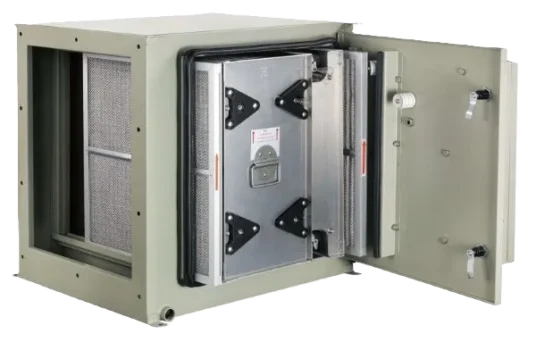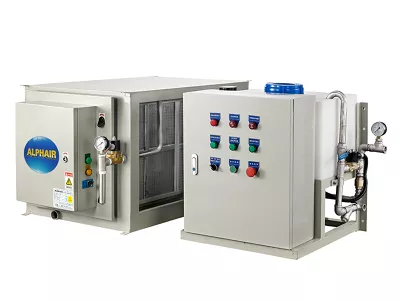Your Best Electrostatic Precipitator Supplier in China
Exhaust Air Purification Solution | Smoke Pollution Control | Commercial Kitchen Smoke Filtration | CNC Oil Mist Collection

Reliable Electrostatic Precipitator Supplier in China – 30 Years of Expertise
Exported to 50+ Countries. Trusted by customers in Japan, the USA, Germany, the UK, Italy, and more.
As a leading electrostatic precipitator supplier, ALPHAIR specializes in commercial kitchen exhaust filtration and metalworking oil mist purification, along with solutions for barbecue smoke, textile production, PVC leather manufacturing, and DOP oil mist recycling. Our products meet ISO9001, ISO45001, ISO14001, CE, ASHRAE 52.2, and EN779 standards, ensuring high filtration efficiency. We provide OEM & ODM services, along with technical support, installation guidance, and logistics assistance. With exports to the USA, UK, Germany, Japan, Canada, and beyond, ALPHAIR is your reliable partner in advanced air purification technology.

High-Efficiency Technology
Tailored OEM Solutions
Flexible OEM and custom branding to help build your brand.
Competitive Pricing
Fast Delivery
Expert Pre-Sales Consultation
Comprehensive Dealer Training
Responsive After-Sales Service
Strict Quality Management
Superior Smoke & Fume Filtration Solution

Commercial Kitchen Smoke

BBQ & Grilling Smoke

Metalworking Coolant Mist

Industrial Exhaust Fumes
Our Filtration Products with Electrostatic Precipitator Technology
Happy Users
FAQ on Our Company
Our factory is based in Dongguan, Guangdong, China. It is only about 1.5 hours from Guangzhou or Shenzhen by car. You are welcome to visit us in person or schedule a virtual tour of our production facilities.






























